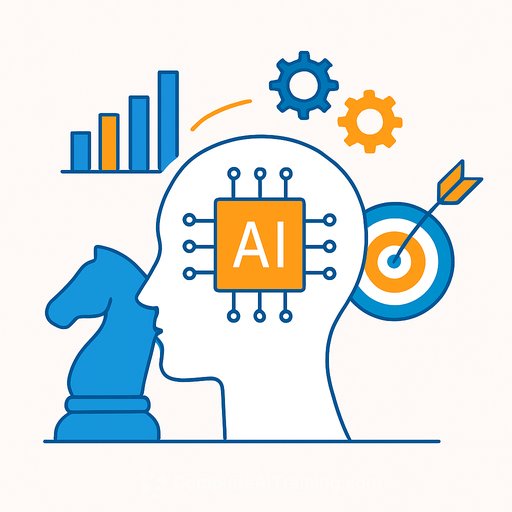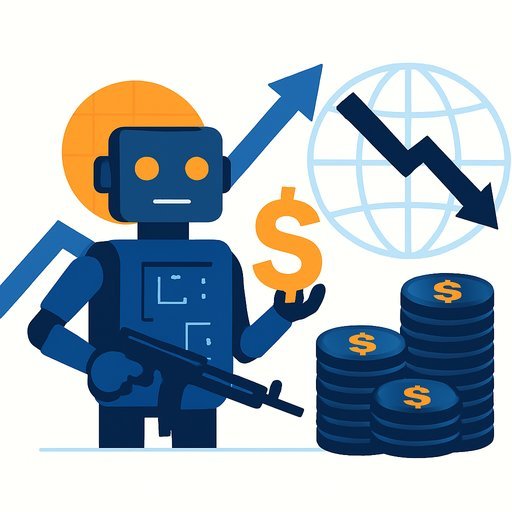Strategic AI Beats Tactical: What That Actually Means
Most AI rollouts underperform because they stay broad and shallow. The wins look good on a slide, but they don't move core business metrics. As one well-known industry voice put it, the projects that work are "enterprise-level, deep-and-narrow" and tightly linked to how you compete - not a scattered set of pilots chasing quick productivity bumps or pretty demos.
If AI isn't changing how you win customers, create value, or structure your operations, it's tactical. Useful, but limited. Strategic AI is slower at first, costs more, and touches more of the business - and that's exactly why it pays off.
Strategy vs. Tactics: Two Different Questions
Many leadership teams say, "We need an AI strategy," and then ask, "What should we do with AI?" That traps the conversation in cheaper, better, faster. Important, but incomplete.
Strategy answers two questions: Where do we play? How do we win? AI enters after those choices. It either extends your edge in your chosen space, or it distracts you with tools.
The Shipping-Container Lesson
When containers arrived, the first-order effect looked like automation: cranes replacing dock workers. The big change came later. Trucks, trains, and ships aligned on a standard, logistics became reliable end to end, and manufacturing reorganized around components and global supply chains.
The system changed, not just the dock. New jobs, new competitors, even new winners at the country level emerged from that standardization.
Apply That Logic to AI
AI collapses the cost and time of certain knowledge tasks. Translating documents is the easy example. The deeper shift is structural: if the marginal cost of analysis, drafting, or routine decisions drops, how should your product, pricing, service model, and operating model change?
That's the leap from "assistants for employees" to "a new way we create and capture value." Strategy lives in that second-order thinking.
How to Build a Strategic AI Program
- Tie AI to "where we play" and "how we win." Clarify the customer problems you own, the segments you prioritize, and the edge you aim to scale (speed, trust, personalization, cost, distribution, network effects). Pick AI use cases that push those advantages forward.
- Go deep-and-narrow first. Choose one high-value domain (claims, underwriting, pricing, supply planning, onboarding, collections, field service) and rework the process end to end. Expect model work, data plumbing, workflow redesign, policy updates, and change management.
- Measure business change, not task savings. Target outcomes like new revenue, margin expansion, cycle-time compression, loss reduction, risk-adjusted growth, or share gains. Hours-saved is a useful leading indicator, not the finish line.
- Build a cross-functional operating model. Create durable AI product teams (product owner, SMEs, data science/engineering, design, risk/legal, compliance, IT). Give them a clear problem, budget, and decision rights. Define who owns outcomes in the business.
- Upgrade leadership intent and culture. Set a clear point of view on AI's role in your strategy. Fund experiments, but stage-gate for scale. Reward learning velocity, not just perfect business cases. If leaders aren't championing this, it will stall.
- If you're not ready for "strategic," start tactical with a map. Run targeted, low-risk pilots - but design them to connect. Use common data assets, shared platforms, and reusable components to assemble a future strategic capability.
- Identify the levers. Strategy alignment, leadership sponsorship, culture, talent, org design, data, platforms, security, and governance. Map the gaps. Fund the riskiest assumptions first.
- Communicate early and often. Host working sessions with business leaders and frontline managers. Explain what changes and why. Build trust by showing how policy, quality, and oversight are built in.
- Monitor, decide, and scale. Instrument outcomes. Review monthly. Kill, pivot, or double down. Scaling means industrializing data pipelines, MLOps, controls, and training - not just adding users.
Choosing Your First Strategic Wedge
- Revenue-side bets: Dynamic bundling or next-best-offer systems that learn from behavior and context; AI copilots built into your product to improve activation, usage, and retention; sales and success copilots that slash ramp time and improve win rates.
- Cost-and-speed bets: Straight-through processing (from intake to decision) on a narrow document or case type; AI-first customer service flows that resolve specific intents with high accuracy; intelligent exception handling in supply or finance.
- Risk-and-quality bets: Continuous controls on sensitive workflows; content safety and policy enforcement embedded in creation tools; explainability and audit trails for regulated decisions.
Pick one wedge where data access is tractable, process owners are supportive, and impact is easy to measure in hard numbers. Prove it, then scale to adjacent processes.
Avoid the Common Failure Patterns
- Broad, shallow pilots that never touch a P&L.
- Tool-chasing without a capability roadmap or ownership.
- No redesign of process, incentives, or policy - just "drop AI in."
- Ignoring data quality, lineage, and security until it's too late.
- Counting "hours saved" while revenue, margin, or risk doesn't budge.
- Underinvesting in training, communications, and change management.
Practical Tests Before You Fund
- Strategy test: Can you explain in one sentence how this use case advances where you play and how you win?
- Value test: What is the target business metric, its baseline, the expected lift, and the time to impact?
- Feasibility test: Do you have the data rights, quality, and latency? Is there a clear owner and path to production?
- Risk test: What could go wrong? How will you detect it, explain it, and shut it off?
Leadership and Culture: The Make-or-Break
Strategic projects thrive where leaders understand AI's potential and set a bold but focused intent. They fund deeper, longer programs, invite experimentation, and insist on measurable business change. Where intent is unclear and the budget is spread thin across pilots, strategy stalls.
If You're Early, Build Momentum the Right Way
- Stand up a small AI product council to prioritize and unblock work.
- Start with tactical wins, but share components across teams to form a platform.
- Invest in enablement: policy, prompts, data practices, and frontline training.
- Publish a simple playbook and update it quarterly with lessons learned.
Recommended Reading
For a crisp strategy frame, see "Where to Play / How to Win" from classic strategy work by Lafley and Martin. Helpful summary via HBR: A Playbook for Winning Strategy.
Team Enablement
If you need structured upskilling across roles, consider role-based AI curricula and certifications to standardize practices and speed adoption. A practical starting point: AI courses by job.
Bottom Line
Tactical AI makes tasks quicker. Strategic AI changes how you go to market, what you sell, and how your business operates. Choose a deep, strategic wedge, rework the system around it, measure real business change, and scale what works. That's how AI compounds into advantage instead of fading into pilot purgatory.
Your membership also unlocks:






